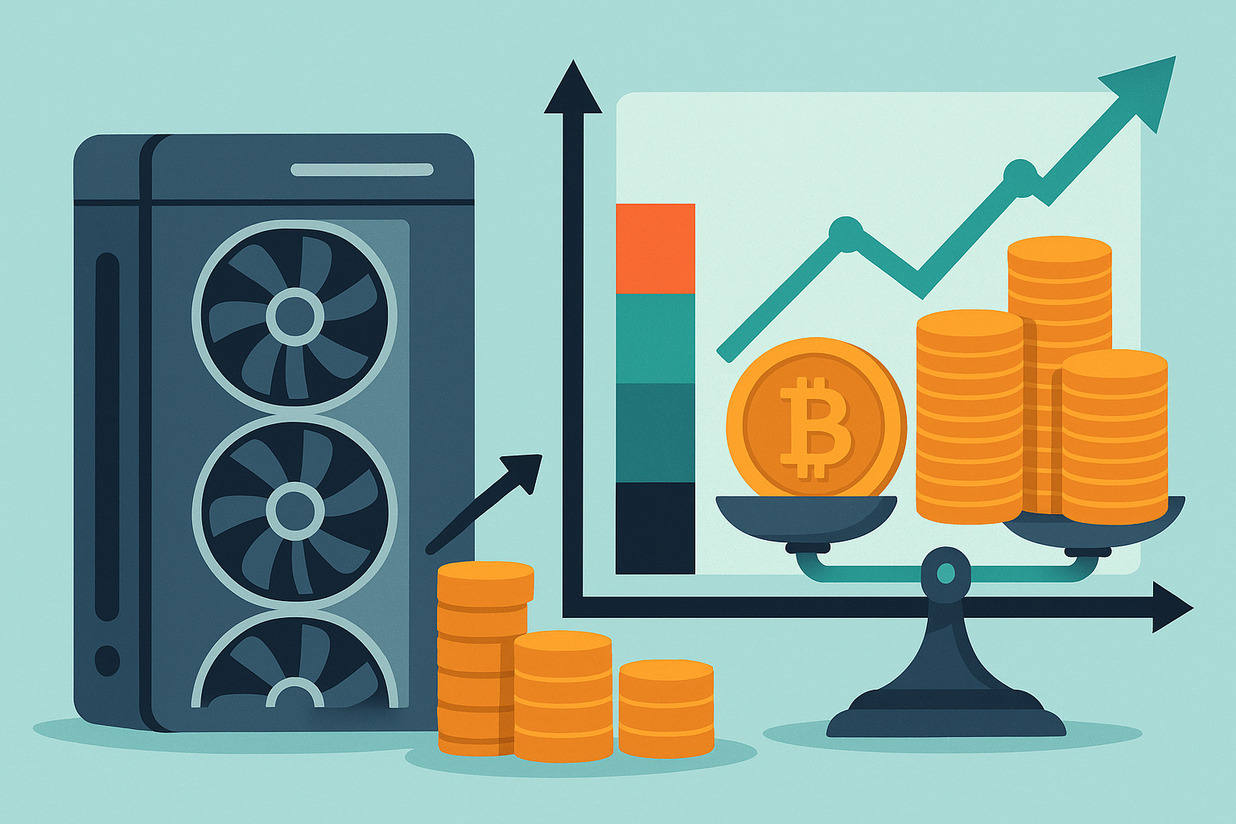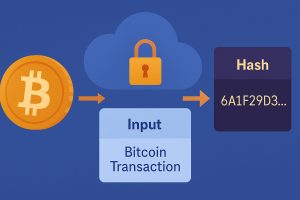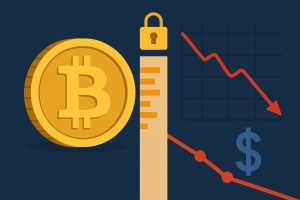Understanding why mining rewards rise and fall
Bitcoin mining isn’t just about powerful machines solving complex math problems. There’s a rhythm behind it that many overlook. Mining difficulty plays a key role in how much a miner earns, and it’s a setting that quietly shifts every two weeks. For those running rigs at home or in large data centers, knowing how difficulty works is a step toward understanding why payouts aren’t always consistent.
Difficulty is designed to balance the network. It adjusts based on how fast blocks are mined, which usually reflects how many machines are competing for rewards. When more miners join the race, the difficulty goes up. When some leave, it drops. These changes affect how often a miner finds a block—and how much they earn.
This matters not just for full-time miners but also for investors and crypto enthusiasts trying to make sense of the trends. A small adjustment in difficulty can be the difference between profit and loss, especially when energy costs come into play.
What mining difficulty actually means
Bitcoin difficulty measures how hard it is to find the next block in the chain. Think of it like turning a combination lock with billions of possibilities. The more miners trying to crack it, the harder the system makes it. This keeps the time between new blocks steady—around ten minutes per block.
Every 2,016 blocks, the network looks back. If blocks were mined too quickly during that period, the difficulty goes up. If they were mined too slowly, it goes down. This self-adjusting system helps keep Bitcoin secure and predictable.
It doesn’t matter where the miners are or what equipment they use. The network doesn’t care if the hash rate comes from one big player or thousands of small ones. All that matters is how fast blocks are solved. That’s what tells the system how to adjust.
How rising difficulty can lower rewards
When difficulty increases, each miner’s share of potential rewards shrinks unless they also increase their hash rate. For those with fixed hardware, this means earning less even if their machines are running as usual. The work stays the same, but the results start to thin out.
Imagine a group digging for treasure. If more people show up to dig, the chance of finding something goes down for each individual. It works the same way with mining. As more miners compete, the reward is spread thinner unless one boosts performance or joins a stronger pool.
For solo miners, this can feel discouraging. A higher difficulty level means they might go days or weeks without seeing a reward. This is why many small miners switch to pools, where they share both the effort and the income.
Falling difficulty and better earnings potential
When difficulty drops, each hash has a higher chance of earning something. This often happens when miners leave the network due to low prices, rising electricity costs, or outdated equipment. The remaining miners then have fewer competitors.
Lower difficulty can feel like a temporary boost. For a short while, rewards can increase without any upgrades. Miners suddenly see better results from the same machines and setup. It’s one of those rare moments where less effort leads to more return.
Still, this doesn’t always last long. As word spreads and mining becomes profitable again, more players rejoin the network. Before long, the difficulty climbs back up, returning to a more balanced state.
The connection between hash rate and difficulty
Hash rate is the total computational power used by all miners. Difficulty responds directly to it. When hash rate spikes, it usually means new machines or more miners have joined. The system reacts by making the puzzles harder to keep block time consistent.
A miner’s personal hash rate becomes less effective when global hash rate grows quickly. Even if a miner has powerful equipment, they’re now up against even stronger competition. This imbalance squeezes earnings until things settle down.
During times when hash rate drops suddenly—say, after a ban or power shortage in a mining hotspot—difficulty drops next. It’s a delayed reaction, but one that opens a window for those still mining to earn a bit more.
Profit margins and electricity costs under shifting difficulty
Mining is about numbers. Equipment is expensive. Electricity is a constant cost. When difficulty increases, and earnings drop, those fixed expenses start to bite harder. The same bill comes every month, but the Bitcoin earned to cover it might shrink.
In high-difficulty seasons, miners with cheaper power often survive better. They can keep going while others are forced to shut down. It’s also why some miners move operations to places with stable energy prices or even renewable sources.
Some use difficulty forecasts to decide when to scale up or down. If they expect a rise, they might delay buying new machines. If a drop is likely, they might ramp up production temporarily to take advantage of easier mining conditions.
Pool mining as a way to smooth out fluctuations
Solo mining works for a few, but for many, pool mining offers more stability. In a mining pool, members contribute their hash power and share rewards proportionally. This spreads the impact of difficulty across many contributors.
Even when difficulty rises, pools help ensure that payouts continue, though possibly in smaller amounts. The consistency of smaller but more frequent rewards is often more sustainable than waiting weeks for a lucky block hit.
Pools also often handle software updates, security, and payout systems, reducing the technical burden for individual miners. This makes it easier for newcomers or small-scale operations to stay active despite difficulty shifts.
Equipment choice and its impact during difficulty changes
Not all mining machines are created equal. Some are designed for energy efficiency, others for raw power. When difficulty rises, older machines might no longer earn enough to justify their energy use. They get turned off or replaced.
Miners who invest in efficient equipment often do better long term. These machines may cost more upfront, but they offer better performance per watt. That makes them more resilient when the earnings per hash go down.
It’s a constant race. Those with better gear stay ahead longer, while others fall behind and exit the network. That exit then contributes to lowering the difficulty again, showing how equipment upgrades shape the mining cycle.
Tracking difficulty changes and planning ahead
Staying informed about upcoming difficulty changes can help miners make smarter decisions. There are websites and apps that estimate future adjustments based on current hash rate trends. Watching these tools gives a heads-up before the network recalibrates.
Some miners use this data to time their actions. They might hold back on selling Bitcoin during a profitable stretch, or turn off machines when costs outpace earnings. The goal is to mine smart, not just hard.
Having a routine for checking these metrics is part of responsible mining. It allows even small operators to adapt to changes instead of getting caught off guard by sudden shifts in income.
A changing puzzle with real-world effects
Bitcoin mining difficulty isn’t just a number buried in the code. It’s a living part of the system that keeps everything running fairly. It rises and falls in response to how the world interacts with Bitcoin—from new machines to shifting energy markets.
For miners, difficulty shapes daily earnings and long-term strategy. It affects when to upgrade, when to join a pool, or even when to pause entirely. It’s not something to fear, but something to understand and work with.
By keeping track of difficulty changes, miners gain a better sense of the game they’re playing. And in a space that never sleeps, that awareness makes a big difference.
















No Responses